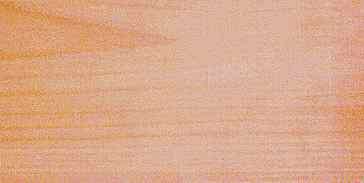
Celery-top pine (Phyllocladus rhomboidalis)
Family:
Common names: Celery-top pine
Distributed in: Australia, Malaysia, Papua New Guinea (Oceania and S.E. Asia)
Distribution overview: The species occurs in southeast Asia, and grows in Tasmania and Papua New Guinea.
Common uses: Boat building, Cabinetmaking, Domestic flooring, Factory flooring, Flooring, Furniture , Furniture components, Furniture squares or stock, Joinery, Office furniture, Shipbuilding, Vats
Environment profile: Status within its natural growth range has not been officially assessed
Tree size: Tree height is 30-40 m
Colors: the heart isRed, Yellowand the sapwoodWhite, Yellow.The grain isStraight, the textureMedium
Natural durability: Non-durable, Perishable
Odor: No specific smell or taste
Kiln Drying Rate: Naturally dries quickly
Drying Defects: Checking, Distortion
Ease of Drying: Rapidly
Blunting Effect: Little
Boring: Fairly easy to very easy
Gluing: Fairly Easy to Very Easy
Mortising: Fairly Easy to Very Easy
Moulding: Fairly Easy to Very Easy
Movement in Service: Fairly Easy to Very Easy
Nailing: Fairly Easy to Very Easy, Very Good to Excellent
Planing: Fairly Easy to Very Easy
Resistance to Impregnation: Resistant sapwood
Response to hand tools: Fairly Difficult to Difficult to Work
Routing recessing: Fairly Easy to Very Easy
Veneering qualities: Veneers easily, Veneers moderately easy
Steam bending: Moderate
Screwing: Fairly Easy to Very Easy, Very Good to Excellent Results; Turning: Fairly Easy to Very Easy
Painting: Very Good to Excellent; Polishing: Fair to Good; Staining: Very Good to Excellent; Varnishing: Very Good to Excellent;
- Numerical data Metric
- Numerical data English
- Strength properties
- References
 |
 |
 |
 |
| Item |
Green |
Dry |
Metric |
| Specific Gravity |
0,51 |
0,6 |
|
| Density |
|
544 |
kg/m3 |
| Bending Strength |
688 |
992 |
kg/cm2 |
| Crushing Strength |
56 |
71 |
kg/cm2 |
| Hardness |
|
446 |
kg |
| Impact Strength |
|
|
cm |
| Shearing Strength |
|
125 |
kg/cm2 |
| Stiffness |
94 |
115 |
1000 kg/cm2 |
| Tangential Shrinkage |
|
|
% |
| Radial Shrinkage |
|
|
% |
| Weight |
|
|
kg/m3 |
| Maximum Load |
|
|
cm-kg/cm3 |
| Toughness |
|
110 |
cm-kg |
| Static Bending |
427 |
580 |
kg/cm2 |
|
 |  |  |  | | Item | Green | Dry | English | | Bending Strength | 9790 | 14112 | psi | | Crushing Strength | 798 | 1015 | psi | | Density | | 34 | lbs/ft3 | | Hardness | | 985 | lbs | | Maximum Crushing Strength | 5116 | 7909 | psi | | Shearing Strength | | 1779 | psi | | Static Bending | 6086 | 8252 | psi | | Stiffness | 1343 | 1637 | 1000 psi | | Toughness | | 96 | inch-lbs | | Specific Gravity | 0.51 | 0.6 | | | Weight | 38 | 31. | lbs/ft3 | |
Elery top pine is described as a strong timber, that is dimensionally stable and tough. Its strength properties are rated as medium to high in all categories. Bending strength of air-dried wood is comparable to that of Teak, which is considered to be strong. Maximum crushing strength, or compression strength parallel to grain, is high. It is fairly hard, resisting wear, denting, and marring fairly well. It is a heavy wood and has high density.
Bolza, E. and N.H. Kloot.1963.The Mechanical Properties of 174 Australian Timbers.Division of Forest Products Technological Paper No. 25.Commonwealth Scientific and Industrial Research Organization, Melbourne, Australia.Kloot, N.H. and E. Bolza. 1961. Properties of Timbers Imported into Australia. Division of Forest Products Technological Paper No. 12. Commonwealth scientific and Industrial Research Organization, Melbourne, Australia.Lincoln, W.A. 1986. World Woods in Color. Linden Publishing Co. Inc., Fresno, California.Wallis, N.K. 1956. Australian Timber Handbook. Sponsored by The Timber Development Association of Australia. Angus & Robertson, Ltd., 89 Castlereagh Street, Sydney, Australia.
|








